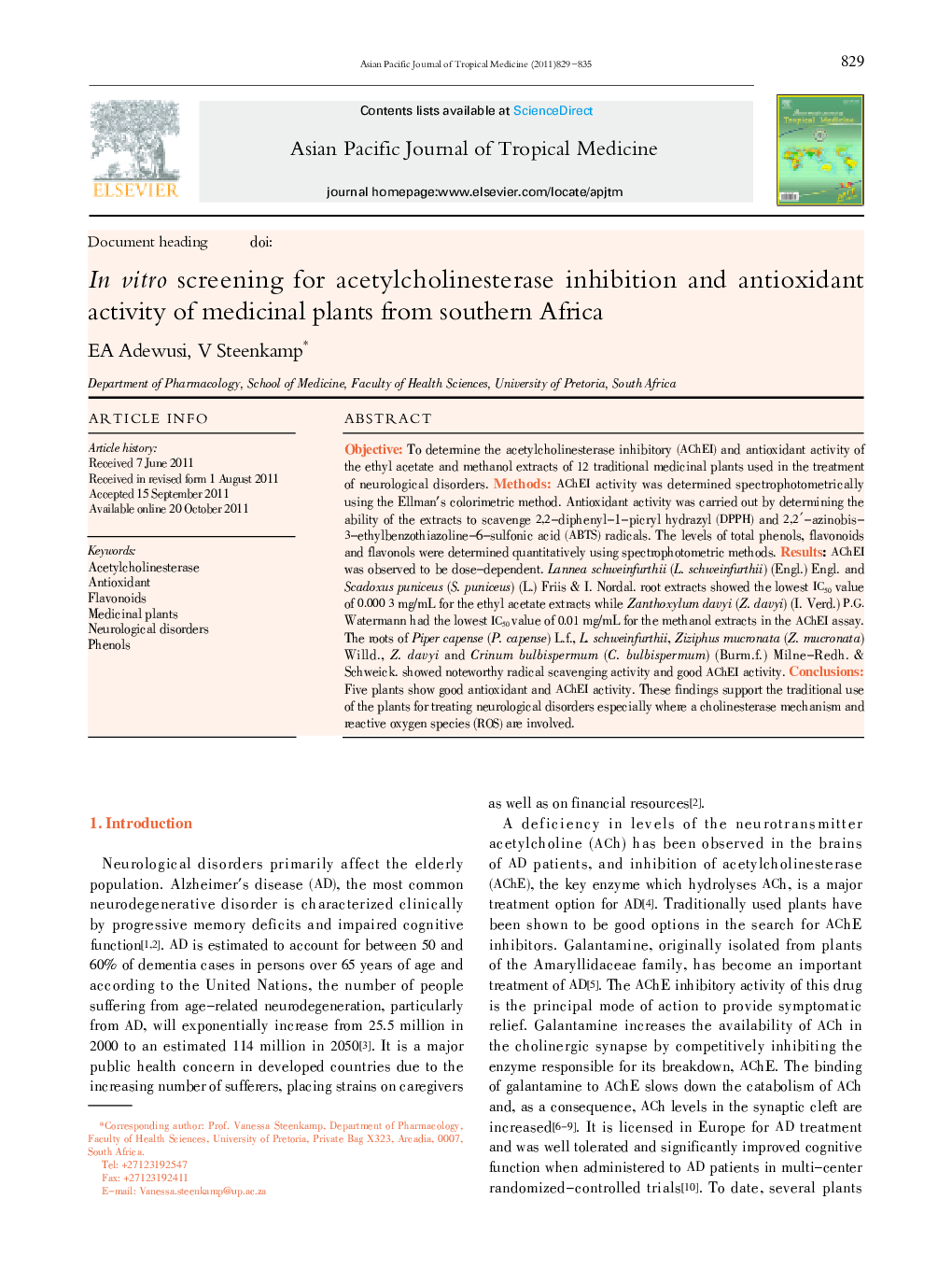| Article ID | Journal | Published Year | Pages | File Type |
|---|---|---|---|---|
| 3456588 | Asian Pacific Journal of Tropical Medicine | 2011 | 7 Pages |
ObjectiveTo determine the acetylcholinesterase inhibitory (AChEI) and antioxidant activity of the ethyl acetate and methanol extracts of 12 traditional medicinal plants used in the treatment of neurological disorders.MethodsAChEI activity was determined spectrophotometrically using the Ellman's colorimetric method. Antioxidant activity was carried out by determining the ability of the extracts to scavenge 2,2-diphenyl-1-picryl hydrazyl (DPPH) and 2,2′-azinobis-3-ethylbenzothiazoline-6-sulfonic acid (ABTS) radicals. The levels of total phenols, flavonoids and flavonols were determined quantitatively using spectrophotometric methods.ResultsAChEI was observed to be dose-dependent. Lannea schweinfurthii (L. schweinfurthii) (Engl.) Engl. and Scadoxus puniceus (S. puniceus) (L.) Friis & I. Nordal. root extracts showed the lowest IC50 value of 0.000 3 mg/mL for the ethyl acetate extracts while Zanthoxylum davyi (Z. davyi) (I. Verd.) P.G. Watermann had the lowest IC50 value of 0.01 mg/mL for the methanol extracts in the AChEI assay. The roots of Piper capense (P. capense) L.f., L. schweinfurthii, Ziziphus mucronata (Z. mucronata) Willd., Z. davyi and Crinum bulbispermum (C. bulbispermum) (Burm.f.) Milne-Redh. & Schweick. showed noteworthy radical scavenging activity and good AChEI activity.ConclusionsFive plants show good antioxidant and AChEI activity. These findings support the traditional use of the plants for treating neurological disorders especially where a cholinesterase mechanism and reactive oxygen species (ROS) are involved.
